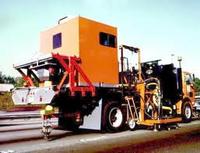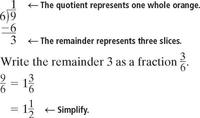-
Nuclear waste repositories in suburbia?
Finding sites for nuclear waste storage is a growing problem, with decision makers running into the “not in my back yard” problem; the demise of Nevada’s Yucca Mountain project is but the latest example; researchers find that acceptance of sites for spent nuclear fuel repository may well depend on gender and economic background: in Finland, at least, affluent men more often are more receptive to the idea of locating such facilities near their neighborhoods than women or disadvantaged people
-
-
Automated pavement crack detection and sealing system to extend roadways life

Researchers from the Georgia Tech Research Institute developed a prototype automated pavement crack detection and sealing system; in road tests, the system was able to detect cracks smaller than one-eighth-inch wide and efficiently fill cracks from a vehicle moving at a speed of three miles per hour
-
-
New method uses gunshot residue to determine caliber, type of weapon used in crime
Researchers have developed a method to determine the caliber and type of weapon used in a crime by analyzing gunshot residue (GSR); using near-infrared (NIR) Raman microspectroscopy and advanced statistics, the new technique may play a pivotal role in law enforcement cases and forensic investigations
-
-
Belief in hell associated with reduced crime
A broad study, study following143,197 people in sixty-seven countries over twenty-six years, found that criminal activity is higher in societies in which people’s religious beliefs contain a strong punitive component than in places where religious beliefs are more benevolent; a country where many more people believe in heaven than in hell is likely to have a much higher crime rate than one where these beliefs are about equal
-
-
Knee-strapped power harvester to do away with batteries

Battery-powered devices may soon be a thing of the past; researchers have created an innovative energy harvester to power some of the latest wearable gadgets; the energy harvester, strapped to the knee joint, converts knee motions into energy
-
-
New device allows users to scale walls, mountain faces
A group of mechanical and aerospace engineering students, using engineering principles, basic math, and ingenuity, have designed a system which would enable special operations force personnel, first responders, and members of search and rescue teams to scale buildings or mountain faces under a variety of conditions
-
-
Seabed carpet could harness wave energy
A synthetic “seabed carpet” that mimics the wave-damping effect of a muddy seafloor could be used to extract energy from waves passing over it. As well as offering a new way to produce clean and cheap electricity, the carpet — which has not yet been built — could be used to protect coastal areas against strong waves and provide areas of safe haven for boats in stormy seas
-
-
Knowledge of fractions and long division predicts long-term math success

From factory workers to Wall Street bankers, a reasonable proficiency in math is a crucial requirement for most well-paying jobs in a modern economy; yet, over the past thirty years, mathematics achievement of U.S. high school students has remained stagnant — and significantly behind many other countries, including China, Japan, Finland, the Netherlands, and Canada; a new study has identified a major source of the gap — U. S. students’ inadequate knowledge of fractions and division
-
-
Key to U.S. future prosperity: world-class research universities
American research universities are essential for U.S. prosperity and security, but the institutions are in danger of serious decline unless the federal government, states, and industry take action to ensure adequate, stable funding in the next decade, says a new report by the National Research Council; “The talent, innovative ideas, and new technologies produced by U.S. research universities have led to some of our finest national achievements, from the modern agricultural revolution to the accessibility of the World Wide Web,” says the chairman of the committee that wrote the report
-
-
Explaining extreme months
Two months in Midwest history — March 2012 and December 1889 — stand out as the warmest winter months in more than a century of weather records; scientists investigated why these months, separated by 123 years, were so exceptional
-
-
Laser beams shine light on nature’s extreme events

“Extreme” events in nature, such as hurricanes, tsunamis and bushfires, may be more commonplace and predictable than you might think; researchers are using lasers to study how frequently extreme events happen, and their work highlights that in nature, “extreme” does not have to mean “rare”
-
-
Quick-curing concrete for infrastructure, mining disaster recovery
A quick-curing concrete can be sprayed to reinforce structures — buildings, runways, tunnels, bridges, dams – damaged by an act of terror or natural disaster; the spraying can be done almost immediately, before the structure fails catastrophically, providing safety for rescue workers who risk their lives minutes after disasters hit, and for still stranded in or near the damaged structure
-
-
Electrified snail produce electricity from natural sugar in its body
The world’s first “electrified snail” has joined the menagerie of cockroaches, rats, rabbits, and other animals previously implanted with biofuel cells that generate electricity — perhaps for future spy cameras, eavesdropping microphones, and other electronics — from natural sugar in their bodies
-
-
Fire risks to increase in some regions of the world
Climate change is expected to disrupt future fire patterns around the world, with some regions, such as the western United States, seeing more frequent fires within the next thirty years; at the same time, fire activity could actually decrease around equatorial regions, particularly among the tropical rainforests, because of increased rainfall
-
-
Two new articles in the Journal of Homeland Security Education
Two new articles in the Journal of Homeland Security Education look at important aspects of homeland security: the first examines homeland security academic provisions in the United States and the EU, the second argues that assessing practitioner experience as it relates to subject theory can be challenging, but critically important in homeland defense and security programs where student experiences are often utilized in the process of applying learning objectives
-
More headlines
The long view
New Technology is Keeping the Skies Safe
DHS S&T Baggage, Cargo, and People Screening (BCP) Program develops state-of-the-art screening solutions to help secure airspace, communities, and borders
Factories First: Winning the Drone War Before It Starts
Wars are won by factories before they are won on the battlefield,Martin C. Feldmann writes, noting that the United States lacks the manufacturing depth for the coming drone age. Rectifying this situation “will take far more than procurement tweaks,” Feldmann writes. “It demands a national-level, wartime-scale industrial mobilization.”
How Artificial General Intelligence Could Affect the Rise and Fall of Nations
Visions for potential AGI futures: A new report from RAND aims to stimulate thinking among policymakers about possible impacts of the development of artificial general intelligence (AGI) on geopolitics and the world order.
Smaller Nuclear Reactors Spark Renewed Interest in a Once-Shunned Energy Source
In the past two years, half the states have taken action to promote nuclear power, from creating nuclear task forces to integrating nuclear into long-term energy plans.
Keeping the Lights on with Nuclear Waste: Radiochemistry Transforms Nuclear Waste into Strategic Materials
How UNLV radiochemistry is pioneering the future of energy in the Southwest by salvaging strategic materials from nuclear dumps –and making it safe.
Model Predicts Long-Term Effects of Nuclear Waste on Underground Disposal Systems
The simulations matched results from an underground lab experiment in Switzerland, suggesting modeling could be used to validate the safety of nuclear disposal sites.
